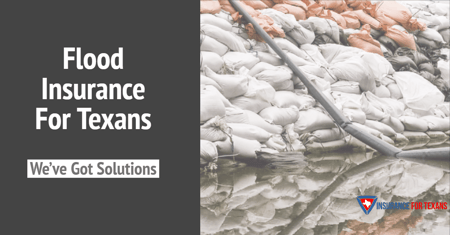Many Texas homeowners don't realize that there are many kinds of home insurance policies. They simply know that they call or click to get a policy, give some information, and then get a quote. They never realize that the policy may not include replacement cost for roofs, large deductibles for claims, or even limited things that the policy covers. How can a homeowner know? There are some keys items that can be checked, and one of those is whether or not the policy is named peril or all peril.
 What Is A Peril And Why Do I Care?
What Is A Peril And Why Do I Care?
In it's simplest form, perils are the events or definitions of what is covered by your home insurance policy. In the most basic home policy, there is a specific list of perils that the policy covers. That is why it is called a named peril policy. That list is generally 16 items in length and will cover the majority of the big stuff. Though some agents will try to sell you a shorter list in the interest of saving money.
- Fire or lightning
- Windstorm or hail
- Explosion
- Riots
- Aircraft
- Vehicles
- Smoke
- Vandalism
- Theft
- Falling objects
- Weight of ice, snow, or sleet
- Accidental discharge or overflow of water or steam
- Sudden and accidental tearing, cracking, burning, or bulging
- Freezing
- Sudden and accidental damage due to short circuiting
- Volcanic Eruption
The key to this list is that if something happens to your home and it's not one of those 16 items, you have no coverage. So if you are worried about a mudslide, you will have a hole in your coverage and be left with a bill. Because the list of items is not all inclusive, this kind of home insurance policy can be cheaper.
However, there is an alternative to the named peril policy. It is known as an All Peril Policy. What means for you, the homeowner, is that everything is covered rather than a specified list like above. Most homeowners prefer an all peril policy because we all recognize that weird stuff just happens. Especially on homes.
 But Wait There's More!
But Wait There's More!
You didn't think it would be that easy, right? All Peril is a great home insurance policy. But the companies have created what is affectionately known as exclusions list. This is a list of items won't be covered under an All Peril Policy. We've talked about flood insurance in the past. Specifically, about how if your home is flooded due to a rising river, you don't have coverage for that under your homeowners policy. This is where that comes from. Rising water from a flood is on the exclusions of an all peril home insurance policy. So it's important to understand what those exclusions look like when it comes time to claim.
One other factor to consider is whether or not your policy splits the peril type between the home itself and your personal property coverage. Policies can be all peril for the structure itself, and named perils for personal property. That means your possessions in your home may be subject to the list of 16 above, rather than the list of exclusions. That can make a big difference if your beloved pet passes while you are out of town for a couple of days and creates a smelly mess on your couch. Yuck. That's not on the list.
Review!
If you have no clue where your policy stands, the first thing you should do is a comprehensive review. Work with an independent insurance agent who can provide real feedback and options to make sure that your home, and it's contents, are properly protected for years to come. Know your perils before you need them!


